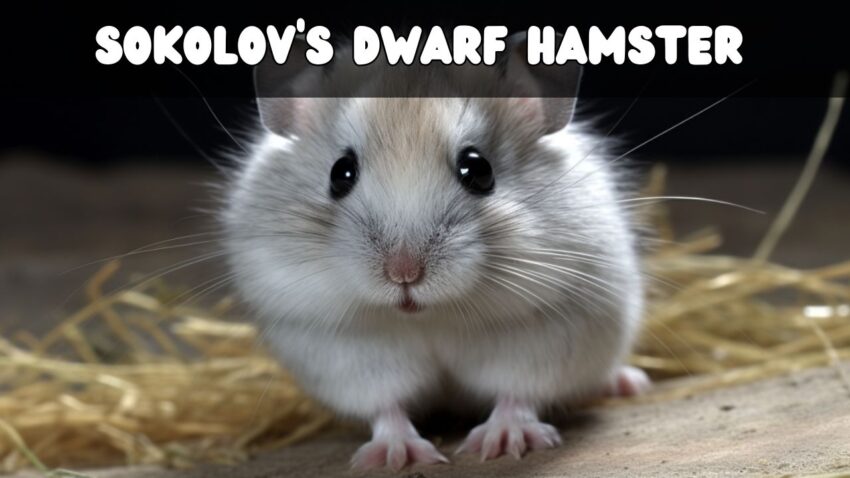As we venture deeper into the captivating world of the Sokolov’s Dwarf Hamster, it becomes paramount to establish a foundational understanding. This section will provide a holistic overview, shedding light on its origins, its journey from the wild terrains to cozy domestic corners, and its significance in both natural ecosystems and human lives. Let’s begin this expedition by unraveling the general nuances that make the Sokolov’s Dwarf Hamster a species worth every bit of our attention and admiration.
The Allure of the Sokolov’s Dwarf Hamster
Within the diverse world of hamsters, the Sokolov’s Dwarf Hamster stands out, both for its unique characteristics and its captivating charm. Originating from specific pockets of the world and now finding a place in many households, this species is a blend of mystery and familiarity. As the smallest of the hamster species, Sokolov’s Dwarf Hamster, with its soft fur and twinkling eyes, isn’t just another pet; it’s a living testament to nature’s variety and intricacy.
Embarking on a Journey of Discovery
This article isn’t merely a collection of facts but an all-encompassing journey into the world of the Sokolov’s Dwarf Hamster. From understanding its natural habitat, delving into its physical attributes, and exploring its unique behaviors to uncovering the secrets of its optimal care, we promise a comprehensive insight. Whether you’re a potential owner, a seasoned hamster enthusiast, or just someone with a curiosity for the little wonders of our world, this guide on Sokolov’s Dwarf Hamster will cater to your thirst for knowledge. Prepare to be enchanted and informed as we journey together through the multifaceted universe of this delightful creature.
Overview

Unveiling Sokolov’s Dwarf Hamster: A Gem in the Rodent World
In the vast expanse of the rodent kingdom, the Sokolov’s Dwarf Hamster emerges as a remarkable gem, distinguished by its unique characteristics and enchanting aura. Named after the eminent biologist who first documented them, these hamsters have captured the hearts of many with their petite size and distinctive features. Unlike the common hamsters we often encounter in pet stores or homes, Sokolov’s Dwarf Hamster holds its own niche, both in terms of behavior and physical appearance. Their agility, combined with their nocturnal habits, make them a marvel to observe, offering insights into the sophisticated world of rodents and their intricate ways of life.
Mapping its Presence: From Natural Habitats to the Cozy Corners of Our Homes
The journey of the Sokolov’s Dwarf Hamster is one of resilience and adaptability. Originating from the vast steppes and semi-arid regions of Asia, these hamsters have evolved to navigate the challenges posed by their environment. Their fur coloration, primarily an earthy brown or gray, serves as a camouflage against predators while also assisting them in thermal regulation.
As humans began to recognize the charm and allure of these creatures, their journey took a new turn. They transitioned from being mere inhabitants of the wild to cherished pets in our households. Today, Sokolov’s Dwarf Hamsters are increasingly found in homes across the world, where they are appreciated not just for their aesthetic appeal but also for their interactive nature. Their adaptability to domestic life underscores their intelligence and resilience, marking them as one of the most versatile species in the rodent family.
Natural Habitat

Venturing into Sokolov’s Dwarf Hamster’s Natural Realm
To truly understand and appreciate the Sokolov’s Dwarf Hamster, one must embark on a journey to its natural habitat. Picture vast expanses of semi-arid steppes, interspersed with patches of shrubbery and occasional rocky outcrops. It’s within this rugged landscape that the Sokolov’s Dwarf Hamster has carved out its niche. The environment presents its own set of challenges, but these hamsters have evolved over millennia to thrive here. Their burrows, often complex networks, provide shelter from potential predators and the elements. These subterranean havens are crucial for their survival, offering both refuge during the hot days and insulation during the colder nights.
Climate, Geography, and the Environmental Cocktail that Defines its Original Abode
The climate of Sokolov’s Dwarf Hamster’s natural habitat is characterized by sharp contrasts. Summer months bring about high temperatures, often pushing these creatures to become nocturnal to avoid the heat, whereas winters can be bitterly cold, forcing them to rely on their accumulated fat reserves. The rain, though infrequent, plays a pivotal role in determining their dietary patterns, as the moisture can lead to sporadic growth of vegetation, offering them a varied diet.
Geographically, the regions inhabited by Sokolov’s Dwarf Hamsters are marked by vast plains and rolling hills, with sparse vegetation. It’s this very sparsity that makes the availability of food a constant challenge. They often resort to storing food in their burrows to tide over lean periods.
The environmental cocktail of their habitat is a blend of harsh conditions mixed with moments of respite. While the terrain and climate can be challenging, they also shape the very essence of the Sokolov’s Dwarf Hamster, from its behavior to its physical characteristics. Their nimble legs, for instance, are not just for swift movements but also for digging into the soil to craft their burrows. Their keen sense of hearing and smell, meanwhile, helps them detect both predators and potential food sources in their vast, open habitat. In essence, every facet of their existence is intertwined with the environment they call home.
Physical Characteristics

The Sokolov’s Dwarf Hamster, like a masterful work of art, is a blend of intricate details and broader strokes of nature. Delicate, yet robust; small, yet full of character, every aspect of its physicality tells a tale of evolution, survival, and beauty. In this section, we will peel back the layers and delve deep into what makes this hamster a unique specimen in the rodent kingdom.
A Detailed Sketch of the Sokolov’s Dwarf Hamster’s Physique: Beyond the Fur and Whiskers
Beginning with their size, Sokolov’s Dwarf Hamsters typically range between 7 to 10 cm in length, making them one of the smaller hamster species. Their diminutive stature is complemented by a weight of approximately 20-35 grams. Covered in a soft, dense fur that varies from hues of brown to grayish tones, these hamsters offer a delightful visual appeal. This fur not only grants them their distinctive appearance but also plays a crucial role in protecting them from the cold of their native habitats.
Their faces are adorned with short, yet sensitive whiskers which provide them with an enhanced tactile sense, invaluable in the dark confines of their burrows. Their eyes, small and beady, glimmer with curiosity, and are always on the lookout for potential threats or food sources.
One can’t talk about the Sokolov’s Dwarf Hamster’s physical characteristics without mentioning their dexterous paws. These are specially designed for both digging and handling food. Their back legs, stronger and slightly longer, are perfect for quick dashes when they sense danger or when chasing after a meal.
Decoding Their Evolutionary Blueprint
The physical attributes of the Sokolov’s Dwarf Hamster are not mere aesthetic choices by nature. They are the result of countless years of evolution, ensuring their survival in their native habitats. For instance, their fur’s coloration offers a form of camouflage, helping them blend seamlessly with their surroundings and escape the watchful eyes of predators. Similarly, their compact size is ideal for the tight confines of the burrows they call home. Every feature, from their agile limbs to their keen eyesight, works in harmony, making the Sokolov’s Dwarf Hamster a marvel of natural design.
Behavior and Temperament
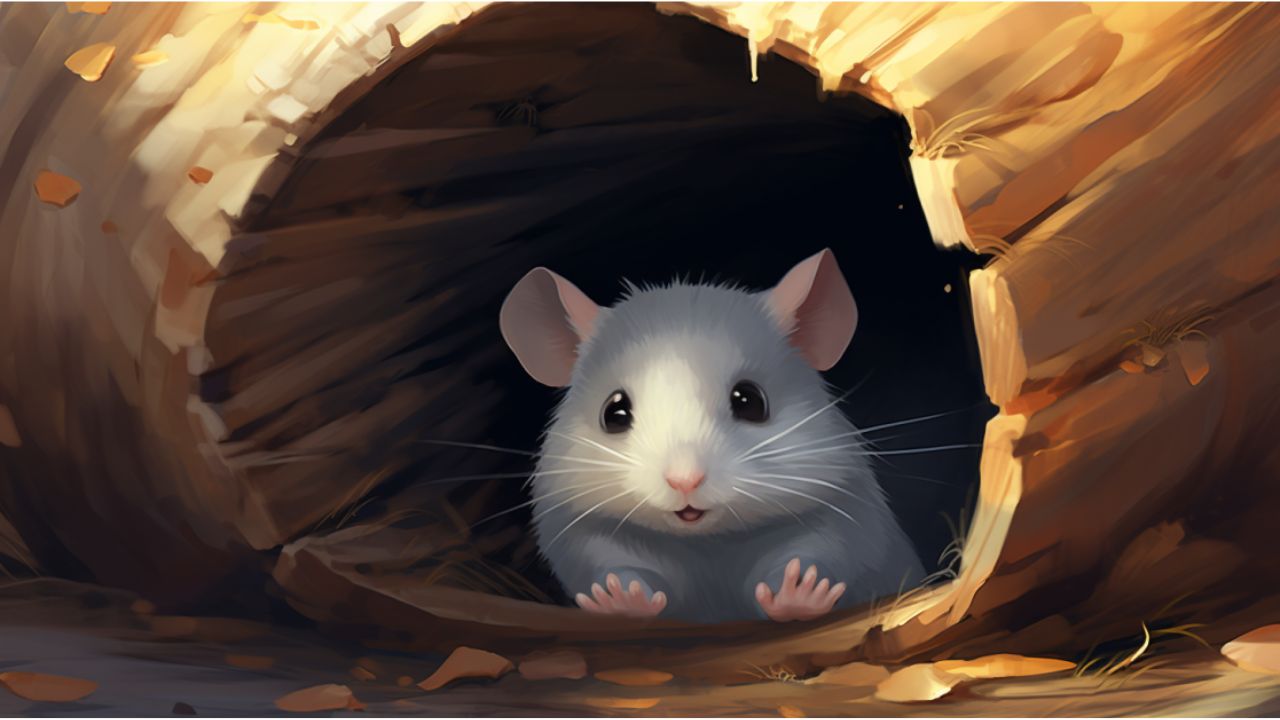
The complex web of behaviors and temperaments in rodents might seem inscrutable at first glance. Yet, with a creature as intriguing as the Sokolov’s Dwarf Hamster, every twitch of a whisker or scamper across a cage tells a vivid story. Let’s embark on an enlightening journey into the psyche of this hamster and understand what really makes it such a fascinating companion.
Deciphering the Temperament: What Makes Sokolov’s Dwarf Hamster Tick?
Sokolov’s Dwarf Hamsters are typically active and lively creatures. Their nocturnal nature means they’re most vivacious during the twilight hours and into the night. When the world around them winds down, these hamsters come alive, exploring their surroundings with an insatiable curiosity. This natural inclination towards exploration is attributed to their wild instincts, where foraging and scouting for potential threats is a nightly ritual.
In terms of sociability, these hamsters are generally solitary creatures. While they can coexist with others of their kind in early life stages, as they mature, a pronounced territorial instinct often emerges. This territoriality can manifest in displays of dominance or occasional skirmishes, especially if their living space feels encroached upon.
While Sokolov’s Dwarf Hamsters can be skittish, with regular, gentle handling and a calm environment, they can grow accustomed to human interaction. Their temperament often strikes a balance between being independent explorers and affectionate pets, craving both personal space and occasional social engagement.
Unique Quirks and Common Behaviors: How Do They Stand Out?
Every species has its quirks, and the Sokolov’s Dwarf Hamster is no exception. One of their most endearing traits is the way they store food. Using their spacious cheek pouches, they can gather and hoard significant amounts of food, often transporting it back to their nests. This behavior, reminiscent of their wild ancestors, is both a survival tactic and an adorable spectacle for pet owners.
Another standout trait is their penchant for burrowing. In the wild, these hamsters create intricate tunnel systems for shelter and to escape predators. In captivity, this instinct doesn’t wane. Given the right bedding, they’ll happily dig, tunnel, and create cozy nooks, showcasing their architectural prowess.
Furthermore, while many rodents are known for their grooming habits, the Sokolov’s Dwarf Hamster takes it a notch higher. They can often be observed meticulously cleaning their fur and even engaging in sand baths if provided with the right setup.
In comparison to other hamster species, the Sokolov’s Dwarf Hamster’s agile movements and pronounced nocturnal behaviors make them stand out. Their blend of independence and social tendencies, paired with their unique behaviors, ensures they remain an ever-engaging presence for those lucky enough to care for them.
Diet and Nutrition
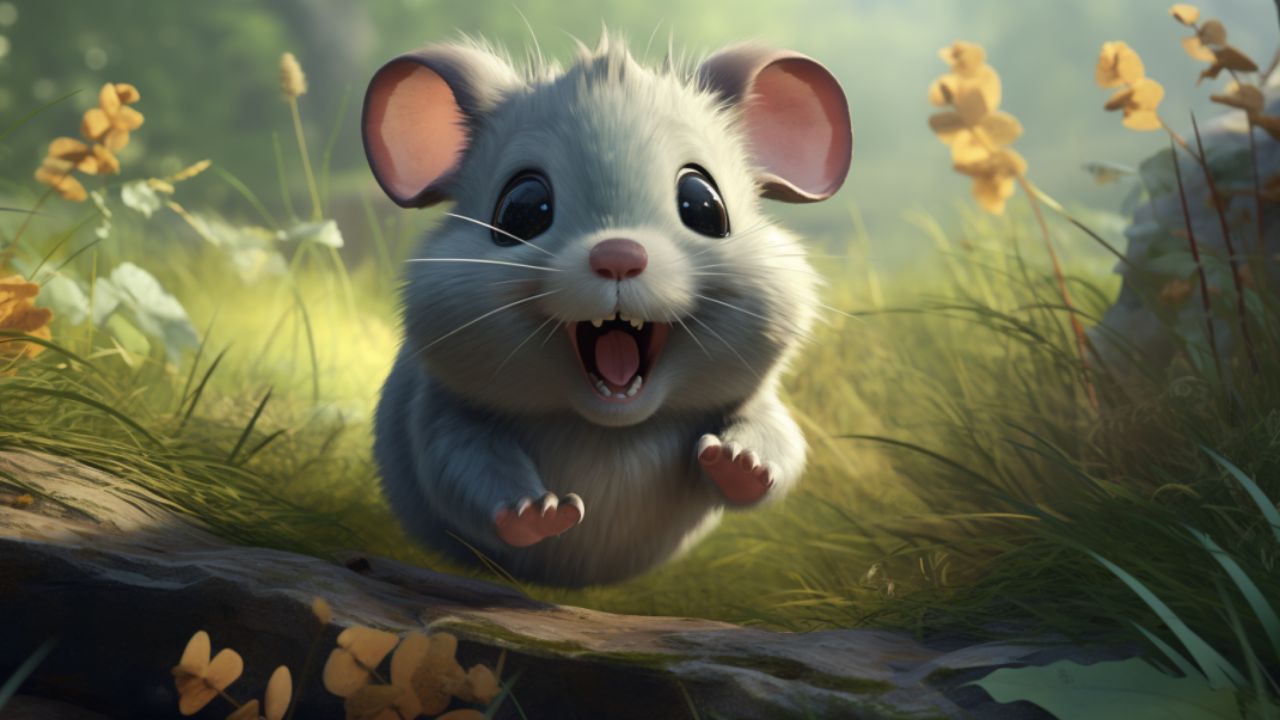
The dietary preferences of a creature, especially one as unique as the Sokolov’s Dwarf Hamster, can offer profound insights into its evolutionary history, natural habitat, and essential health needs. Venturing into the gastronomic world of this hamster allows us to comprehend its nutritional needs while also emphasizing the importance of a well-balanced diet to ensure its health and longevity.
Gastronomic Journey: What’s on the Sokolov’s Dwarf Hamster’s Plate?
In the wild, Sokolov’s Dwarf Hamsters are primarily granivores, thriving on a diet composed of seeds, grains, and the occasional small insects. Their natural habitat, characterized by sparse vegetation, has shaped their dietary habits, making them adept foragers. They scavenge and store substantial amounts of food in their cheek pouches, allowing them to transport their finds back to their burrows for later consumption or during leaner times.
In captivity, their diet should mirror this natural tendency. A foundation of high-quality hamster pellets or mixes, rich in grains and seeds, should form the bulk of their daily intake. These provide the necessary vitamins, minerals, and other essential nutrients. However, variety is key. Supplementing this base diet with fresh vegetables like broccoli, carrots, or leafy greens can offer them additional vitamins and minerals. On rare occasions, offering small amounts of protein in the form of cooked lean meats, boiled eggs, or mealworms can replicate the sporadic consumption of insects in the wild.
Nutritional Balancing Act: Ensuring a Healthy Diet
While the primary dietary components might seem straightforward, maintaining a balanced diet for the Sokolov’s Dwarf Hamster requires attentive care. Overfeeding or a diet too rich in fatty seeds and nuts can lead to obesity, a common issue among captive hamsters. Monitoring their weight and adjusting food quantities accordingly is essential.
It’s also crucial to ensure they have a constant supply of fresh water. While these hamsters are adapted to arid environments and can conserve water efficiently, dehydration can still pose a significant risk, especially in captive settings.
Additionally, certain foods should be approached with caution. Foods high in sugar or citrus fruits can upset their digestive system. Always introduce new foods in small quantities, observing for any adverse reactions.
Lastly, it’s important to remember that, just like us, individual Sokolov’s Dwarf Hamsters can have personal preferences and dietary sensitivities. Paying attention to their likes, dislikes, and any signs of food allergies or intolerances will ensure that you craft a diet that’s not only nutritionally adequate but also palatable for your furry friend.
In sum, the art of feeding the Sokolov’s Dwarf Hamster hinges on replicating its natural diet while ensuring balance and variety. By being attentive to their needs and proactive in addressing any dietary issues, one can guarantee a thriving, happy hamster.
Housing and Environment
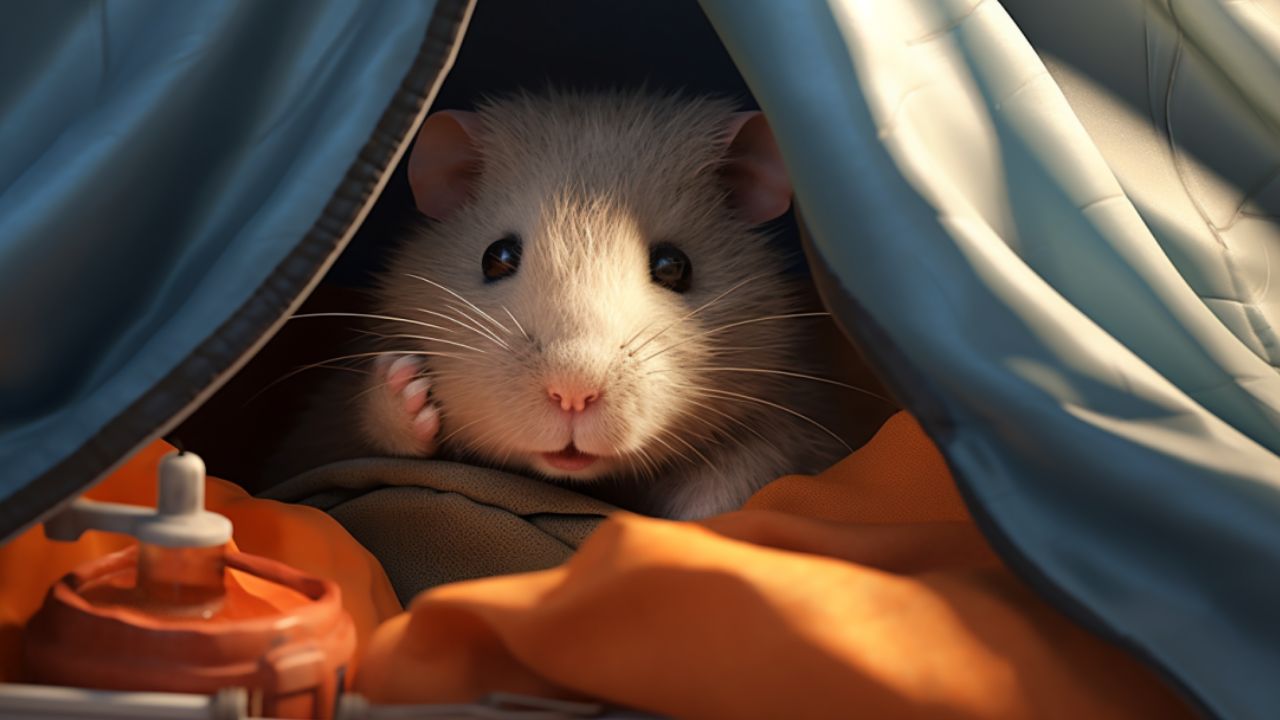
Creating a comfortable, safe, and stimulating environment for any pet is a testament to a caretaker’s dedication. When it comes to the Sokolov’s Dwarf Hamster, replicating elements from its natural habitat while ensuring its domesticated needs are met can be both a science and an art. With their energetic nature and specific needs, the housing and environmental choices can significantly influence their health, happiness, and lifespan.
Crafting a Sanctuary: Ideal Housing Conditions for Sokolov’s Dwarf Hamster
A suitable cage is the first step in establishing a nurturing home for the Sokolov’s Dwarf Hamster. Given their small size, it might be tempting to opt for a compact cage, but these lively rodents require space to explore, exercise, and engage in natural behaviors. A minimum cage size of 24 inches by 12 inches is recommended, though larger is always better. Multi-level cages with ramps and platforms can also enhance their living space, providing vertical exploration opportunities.
Ventilation is paramount, so wire cages with a solid bottom are preferred over aquarium-type enclosures. However, it’s essential to ensure the spaces between the wires are narrow enough to prevent escapes.
The cage’s placement in your home matters too. Sokolov’s Dwarf Hamsters are sensitive to extreme temperatures, so placing their cage away from direct sunlight, drafts, and heat sources is essential. A quiet spot with a consistent temperature between 65°F and 75°F (18°C and 24°C) is ideal.
Essentials for Comfort: Bedding Types, Toys, and More
Once the cage’s foundation is established, it’s time to make it feel like home. Bedding is essential not just for comfort, but also for burrowing — a natural behavior for Sokolov’s Dwarf Hamsters. Paper-based bedding is often recommended due to its absorbent nature and low dust production. Avoid cedar or pine shavings, as these can be harmful. The bedding layer should be thick enough to allow for digging and burrowing, typically around 2-3 inches deep.
Toys and accessories play a pivotal role in a hamster’s environment. Exercise wheels are a must, as they help the hamster stay active and prevent obesity. Ensure the wheel is solid (no rungs) to prevent injuries. Tunnels, bridges, and hideouts can replicate the complex burrow systems they’d have in the wild, catering to their instincts and offering them a sense of security.
Chew toys, made of non-toxic wood or other safe materials, are also essential. Not only do they offer mental stimulation, but they help in maintaining their ever-growing teeth.
Lastly, but just as crucial, is a water bottle, ensuring they have access to fresh water at all times, and a food dish for their daily dietary portions.
In essence, creating an environment for Sokolov’s Dwarf Hamster goes beyond mere containment. It’s about understanding their natural behaviors, preferences, and needs, then crafting a space that aligns with these aspects. With the right setup, your Sokolov’s Dwarf Hamster won’t just live; it will thrive.
Health and Wellness
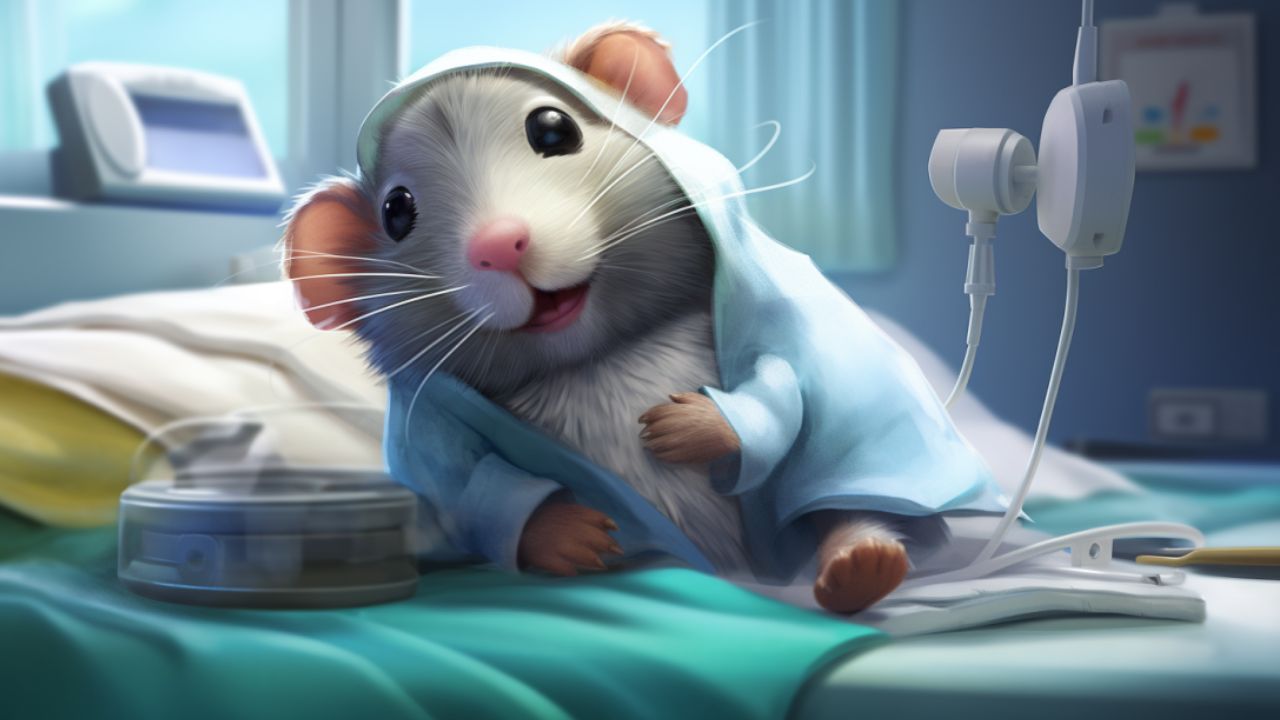
When you welcome a Sokolov’s Dwarf Hamster into your home, their well-being becomes a prime concern. Like any pet, these hamsters have specific health needs and can encounter various issues throughout their life. Being informed and proactive about their health ensures a happy and lengthy life for your furry friend. Understanding the common health concerns and recognizing when it’s time to consult a professional can make all the difference in ensuring they lead a contented life.
Health Watch: Common Health Issues and Prevention
Sokolov’s Dwarf Hamsters, though tiny, can encounter a range of health problems. Here are some prevalent concerns:
- Respiratory Infections: Recognizable by symptoms like wheezing, sneezing, or a runny nose. These can be due to drafts, sudden temperature changes, or unsanitary cage conditions. Ensure a clean environment and stable temperature to minimize risks.
- Wet Tail: This is a severe diarrheal disease often brought on by stress, such as a change in environment or diet. Keeping stressors minimal and ensuring a balanced diet can help stave off this condition.
- Overgrown Teeth: Hamsters’ teeth continuously grow, and if they aren’t worn down, they can become problematic. Offering wooden chew toys can help.
- Tumors: Older Sokolov’s Dwarf Hamsters can sometimes develop benign or malignant tumors. Regularly checking your hamster during gentle handling can aid in early detection.
- Parasites: Mites and lice can sometimes affect hamsters. Regular cage cleaning and ensuring any new items (like bedding) are from reputable sources can minimize this risk.
Prevention often involves a combination of regular cage cleaning, providing a balanced diet, minimizing stress, and offering toys that cater to their natural instincts. Observing your hamster and noting any changes in behavior, appetite, or physical appearance can be instrumental in early detection of potential health issues.
Veterinarian’s Diary: When to Ring the Health Alarm
No one knows your Sokolov’s Dwarf Hamster better than you. If you notice abnormal behaviors like lethargy, a decrease in appetite, difficulty breathing, limping, or any unexplained weight loss, it’s time to consult a veterinarian. Also, any visible injuries or signs of distress necessitate a professional’s opinion.
Moreover, annual check-ups with a vet who specializes in small rodents can be a game-changer. They can provide specific insights, catch potential issues before they become significant concerns, and offer guidance tailored to your hamster’s health needs.
In conclusion, the journey of caring for a Sokolov’s Dwarf Hamster’s health is continuous. But with dedication, awareness, and timely interventions, you can ensure that this journey is filled with vitality, joy, and companionship.
Breeding

Breeding hamsters, especially a species as unique as the Sokolov’s Dwarf Hamster, is an intricate endeavor that requires detailed knowledge, dedicated effort, and a deep sense of responsibility. While the process can be fascinating and rewarding, it’s essential to approach it with the well-being of the hamsters in mind. This segment offers an insight into the reproduction process of Sokolov’s Dwarf Hamsters and underscores the significance of ethical breeding.
Delving into the World of Sokolov’s Dwarf Hamster Reproduction
The Sokolov’s Dwarf Hamster, like other hamster species, has its own unique reproductive behavior and needs. The following are some general points to consider:
- Mating Season: Sokolov’s Dwarf Hamsters might have specific periods during the year when they are more receptive to breeding. Observing your hamsters and noting any behavioral changes can provide cues.
- Pairing: Unlike some other hamster species that might be solitary, Sokolov’s Dwarf Hamsters may tolerate the presence of a mate. However, introductions should be gradual and monitored to ensure compatibility.
- Pregnancy and Birth: A pregnant Sokolov’s Dwarf Hamster will have a noticeable weight gain, and her belly will become more rounded as the gestation period progresses. Once the babies are born, it’s crucial to minimize disturbances to allow the mother to care for her pups without stress.
- Post-birth Care: Newborn hamsters are fragile. Ensuring that they are in a warm, quiet environment and that the mother has ample nutrition is paramount.
Responsible Reproduction: Ethical Considerations and Practices
Breeding hamsters is not just about producing more cute pets; it comes with significant responsibilities:
- Purpose of Breeding: Breeding should never be for casual reasons or mere financial gain. Only breed if you are genuinely interested in promoting the health and well-being of the species and can ensure each offspring will have a loving, forever home.
- Genetic Health: It’s essential to know the lineage of the hamsters being bred to avoid inbreeding, which can lead to health issues and congenital disabilities.
- Post-breeding Commitment: Before breeding, ensure you’re prepared for the possibility of caring for multiple hamsters, especially if you cannot find suitable homes for all of them.
- Education: If you decide to breed, educate potential new owners about the specific needs and care required for Sokolov’s Dwarf Hamsters.
- Avoiding Overpopulation: Continuously breeding can lead to overpopulation, straining resources, and potentially leading to neglected hamsters. Breed responsibly and occasionally.
In conclusion, while the allure of tiny, newborn hamsters can be tempting, breeding Sokolov’s Dwarf Hamsters—or any animal, for that matter—should never be taken lightly. The process requires thorough research, preparation, and an unwavering commitment to the well-being of both the parents and their offspring. Always prioritize health, safety, and ethics above all else.
FAQs

Sokolov’s Dwarf Hamsters, with their unique charm and characteristics, naturally spark a plethora of questions from both potential and current owners. This section aims to shed light on some of the most commonly asked queries about these captivating creatures, providing concise yet informative insights.
Addressing the Sokolov’s Dwarf Hamster Curiosities
- What is the lifespan of a Sokolov’s Dwarf Hamster?
Sokolov’s Dwarf Hamsters typically live for 1.5 to 2 years, although some might live longer with optimal care. - How can I differentiate Sokolov’s Dwarf Hamsters from other hamster species?
Sokolov’s Dwarf Hamsters have distinct physical features and size that set them apart. Observing their behavior, coloration, and size in comparison to other hamster species can give a clear distinction. - Do Sokolov’s Dwarf Hamsters need companionship?
While some hamster species prefer solitude, Sokolov’s Dwarf Hamsters might tolerate or even enjoy the company of their own kind. However, it’s essential to introduce hamsters gradually and monitor them for signs of aggression. - How often should I clean the cage of my Sokolov’s Dwarf Hamster?
A thorough cleaning once a week with spot cleaning for soiled areas every day is generally recommended. This ensures a hygienic environment for your hamster. - Can Sokolov’s Dwarf Hamsters be tamed?
Yes, with patience and gentle handling, these hamsters can be tamed and might even enjoy interaction with their owners. - What are the signs that my Sokolov’s Dwarf Hamster is stressed?
Bar chewing, excessive grooming, hiding for prolonged periods, or showing aggression can be signs of stress. Ensure their environment is calm, spacious, and enriched with toys and activities.
Informative Snippets for Potential and Existing Owners
- Diet: Offering a balanced diet with a mix of commercial hamster food, fresh fruits, and vegetables (in moderation) can keep your Sokolov’s Dwarf Hamster healthy.
- Exercise: Ensure your hamster has access to an exercise wheel and toys to keep them active and mentally stimulated.
- Safety: Always supervise your hamster when out of its cage to prevent injuries and escape attempts.
- Veterinary Care: Like all pets, Sokolov’s Dwarf Hamsters benefit from regular veterinary check-ups. It’s essential to have a vet who’s experienced with small rodents.
- Socialization: Early and gentle handling can make your hamster more sociable and reduce stress during interactions.
- Cage Placement: Place the cage in a quiet area away from direct sunlight, drafts, and loud noises to create a serene environment.
In conclusion, owning a Sokolov’s Dwarf Hamster is both a joy and a responsibility. By staying informed and attentive to their needs, you can ensure a happy, healthy life for your petite furry friend. Always be open to learning more and adapting to your hamster’s specific needs.
Reflections on Sokolov’s Dwarf Hamster

Diving deep into the world of the Sokolov’s Dwarf Hamster, we’ve journeyed through their natural habitats, understood their distinct physical features, marveled at their quirky behaviors, and learned about their dietary needs and housing requirements. These tiny creatures, with their myriad of characteristics, never fail to captivate hearts and minds. As we reach the culmination of this exploration, it’s time to pause and reflect on the wonder that is the Sokolov’s Dwarf Hamster.
Revisiting the Unique Facets of the Sokolov’s Dwarf Hamster
The Sokolov’s Dwarf Hamster is not just another rodent species. They’re a testament to nature’s vast diversity and its ability to produce creatures that bring joy in the smallest packages. From their distinctive color patterns and physique to their vibrant behaviors and temperaments, every aspect about them screams uniqueness. They’re more than just pets; they’re tiny companions with vast personalities.
Their wild habitats have given them the adaptability and resilience they showcase, even in domestic settings. Every twitch of their nose, every roll in their sand bath, every nibble on their food – all these actions echo their innate instincts and evolutionary journey.
Inspiring Action: Sharing, Learning, and Adopting with Consciousness
Knowledge is of no use if not shared and implemented. Now that we’re equipped with in-depth understanding about the Sokolov’s Dwarf Hamster, it becomes our collective responsibility to ensure their well-being, not just as pets but also as a unique species that graces our planet.
- Share the Knowledge: Let others know about the Sokolov’s Dwarf Hamster. The more people know, the better equipped they are to care for these creatures.
- Learn Continuously: As with all living beings, our understanding evolves. Stay updated with the latest research and insights about their care, health, and well-being.
- Adopt with Awareness: If you’re considering bringing a Sokolov’s Dwarf Hamster into your home, do so with the full understanding of the commitment it entails. Ensure you’re ready to provide them with a life that mirrors their natural habitat as closely as possible.
In wrapping up, the Sokolov’s Dwarf Hamster is a marvel in the realm of rodents – a creature that deserves our respect, love, and the best care we can offer. As we continue our journey with or alongside these animals, let’s do so with mindfulness, ensuring they thrive and live their best lives.

